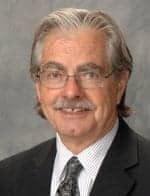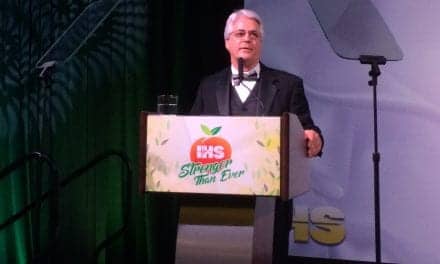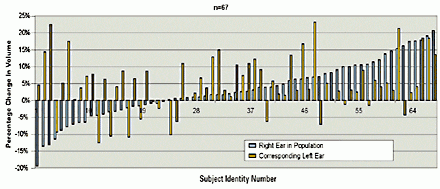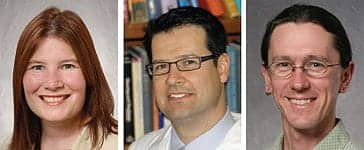An introduction to four challenging case studies
Each pediatric patient provides an opportunity for the audiologist to have a unique intervening and positive factor in people’s lives. This special section features case histories from four master clinicians who present interesting patient studies involving difficult pediatric amplification issues. It is not surprising that three of the four case studies involve children diagnosed with auditory neuropathy spectrum disorder (ANSD), which continues to pose challenges in pediatric hearing care.
The field of pediatric audiology attracts special people. First, they have to love working with children; second, they must have an exceptional knowledge base, masterful clinical skills, and sufficient clinical experience to meet the special needs of these small patients. There may be no more challenging audiology task than the selecting and fitting of hearing aids for pediatric patients. As it is often stated, “…children are not just small adults with hearing aids; they must be tested, fitted, and managed in a total different manner than adults.”
Growing professional challenges. Scollie and Seewald1 point out numerous differences between the pediatric hearing aid process and the procedures used for adults. With pediatric patients, the audiologist often has to work with less-than-complete audiometric information. Thus, judgments must necessarily come from estimates of auditory thresholds obtained through electrophysiological measures, real-ear measurements of growing and changing ear canal volumes and resonances, and confronting the issue of hearing fluctuations due to transient middle ear fluid situations. And, needless to say, many of the children are somewhat less than cooperative with the process and/or unable to contribute reliable behavioral responses.
Pediatric audiology is a dynamic and rapidly changing specialty area of audiology practice. Where we used to provide confirmation for parents who suspected their 2- or 3-year-old child might have hearing loss, the current Joint Committee on Infant Hearing Guidelines2 call for diagnosis of the hearing loss before 1 month of age and completion of the hearing aid fitting process prior to 6 months of age.
This has created entirely different and demanding requirements for the audiologist in regard to early identification and early intervention for infants diagnosed with hearing loss. Counseling the now surprised and shocked parents requires tact and empathy without understating the child’s hearing problem. Fortunately, during the past decade, there have been new technological developments along with advanced testing and fitting protocols to help overcome pediatric challenges. Although the 2003 American Academy of Audiology (AAA) Pediatric Amplification Guidelines3 has provided thorough guidance for the past 8 years, an AAA Task Force is currently working to update and disseminate new pediatric amplification protocols.
It goes without question that every child with hearing loss deserves the best hearing solution possible. This requires the highest standards of care developed from evidence-based practices whenever possible and a methodical system of careful analysis of the child’s hearing loss, and their hearing and communication needs within their families and educational environments. Taking all of that information and data into consideration, the next steps require thoughtful analysis of the pediatric patient’s hearing threshold configurations, individual ear acoustics, and determination of prescriptive hearing aid fitting targets, as well as the selection, programming, and fitting of appropriate technology features in personal amplification devices. The final validation for each child’s hearing aid fitting must rely on their amplified auditory performance through standardized outcome and verification measures.
Professional rewards. From another viewpoint, however, each pediatric patient provides an opportunity for the audiologist to have a unique intervening and positive factor in people’s lives. Although the responsibilities of the audiologist working with young children are huge, the amplification fitting outcome will likely have significant intervening influence (hopefully successful and positive) for the family and the ultimate educational progress and lifetime achievements of the child. It is critical that the pediatric audiologist be fully cognizant that the decisions they make and counseling they provide may have life-changing ramifications for their patients.
In addition to the fact that pediatric patients are often cute and fun to work with, they each present a unique and different challenge to the audiologist. Although working with older adults often results in management of similar hearing loss and similar hearing complaints, each child seems to display a totally different hearing loss presentation requiring individual management requirements. That is to say, every child is completely different than the last pediatric patient.
Pediatric audiologists tend to have a strong sense of calling to provide personalized services to their small patients and their families, along with a professional attachment that grows through the years as they see their patients for follow-up evaluations. In return, the pediatric audiologist gains considerable self-fulfillment from benefiting others.
New areas for pediatric audiologists. The amplification fitting challenge with pediatric patients was recently a focus of Starkey Laboratory’s First Pediatric Symposium held in September 2010. Of course, it would just be much simpler if pediatric patients demonstrated similar problems that would lead to standard solutions; however, that is seldom the case. During the Symposium, four master clinicians presented interesting and challenging patient studies involving pediatric amplification issues and considerations. It is not surprising that three of the case studies involve children diagnosed with auditory neuropathy spectrum disorder (ANSD), as they tend to present confusing diagnostic and management problems.4
- Erica B. Friedland, AuD, of Nova Southeastern University presents a case study that raises questions regarding the contribution of appropriate amplification or increased therapy sessions as the key to successfully aided behavior;
- Erin Pinsky, AuD, a pediatric audiologist from the Cincinnati Children’s Hospital Medical Center, presents a patient with confusing symptoms and conflicting audiology test results from several clinics relative to the differential diagnosis between ANSD and retrocochlear pathology;
- Susan E. Spirakis, MA, the clinical audiology coordinator at the All Children’s Hospital of St Petersburg, Fla, provides a stimulating discussion about an ANSD patient who achieved improved results by slowing the hearing aid’s compression attack/release times;
- Jeffrey Simmons, AuD, the cochlear implant coordinator at Boys Town National Research Hospital in Omaha, Neb, discusses bimodal amplification (cochlear implant and opposite ear hearing aid) in an ANSD pediatric patient.
I am grateful to these four audiologist pediatric specialists for sharing their case studies so that we may all benefit from their evaluation and management of complex pediatric patients who have benefited from personal amplification.
References
- Scollie S, Seewald R. Hearing aid fitting and verification procedures for children. In Katz J, ed. Handbook of Clinical Audiology. 5th ed. Philadelphia: Lippincott Williams and Wilkins; 2002:688.
- Joint Committee on Infant Hearing. Year 2007 Position Statement: Principles and guidelines for early hearing detection and intervention programs. Pediatrics. 2007;120:898-921. Available at: www.jcih.org/posstatemts.htm. Accessed September 7, 2011.
- American Academy of Audiology. Pediatric Amplification Protocol (October 2003). Available at: www.audiology.org/resources/documentlibrary/Documents/pedamp.pdf. Accessed September 7, 2011.
- Hayes D, Sininger Y, Starr A, et al. Guidelines for Identification and Management of Infants and Young Children with Auditory Neuropathy Spectrum Disorder (2008). Available at: www.thechildrenshospital.org/conditions/speech/danielscenter/ANSD-Guidelines.aspx. Accessed September 7, 2011.
Correspondence can be addressed to HR or Jerry L. Northern, PhD, at .
Citation for this article:
Northern J. Amplification in Pediatric Audiology Hearing Review. 2011;18(11): 10-12.






